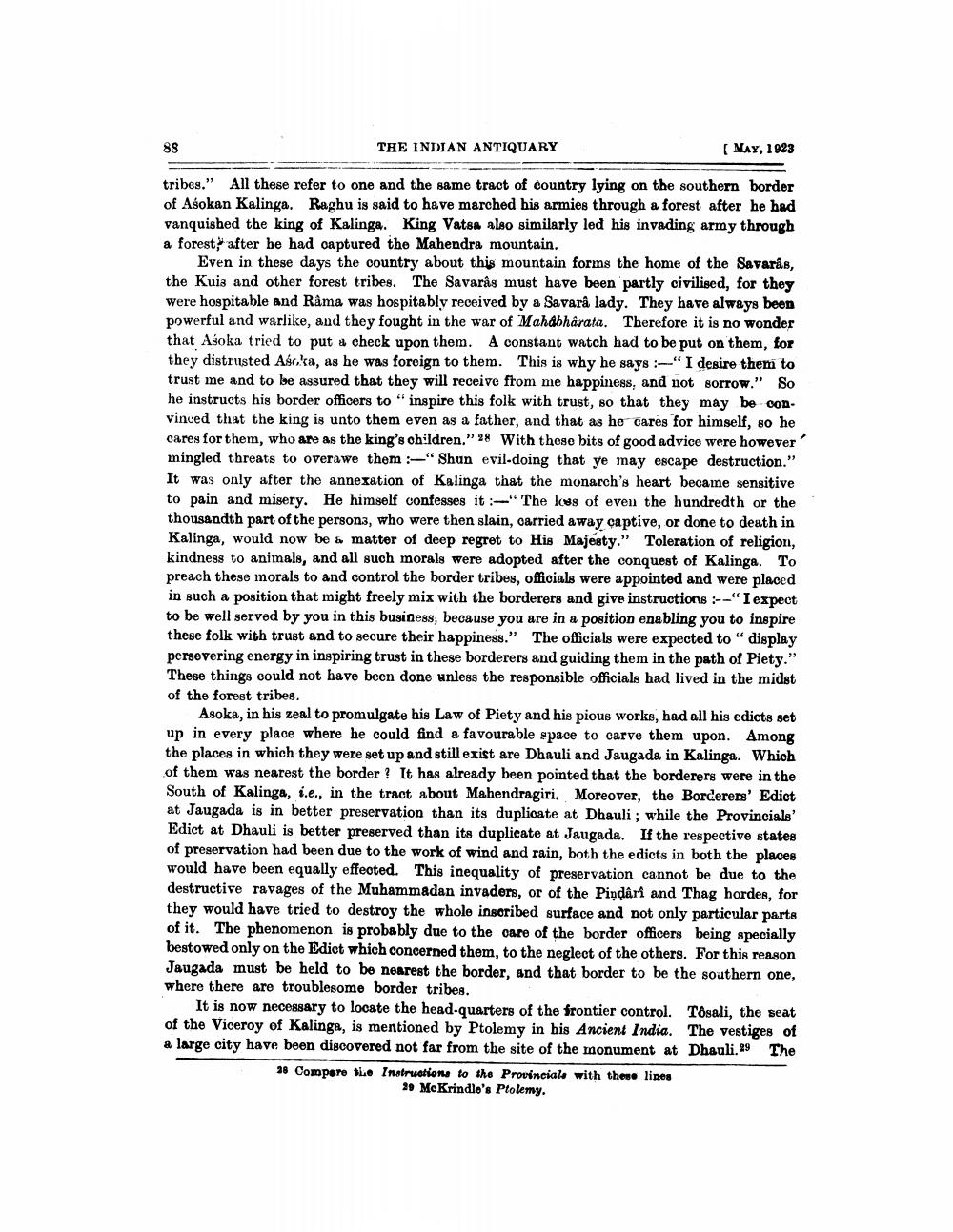________________
88
THE INDIAN ANTIQUARY
(MAY, 1923
tribes." All these refer to one and the same tract of country lying on the southern border of Asokan Kalinga. Raghu is said to have marched his armies through a forest after he had vanquished the king of Kalinga. King Vatsa also similarly led his invading army through a forest after he had captured the Mahendra mountain.
Even in these days the country about this mountain forms the home of the Savaras, the Kuis and other forest tribes. The Savarâs must have been partly civilised, for they were hospitable and Râma was hospitably received by a Savará lady. They have always been powerful and warlike, and they fought in the war of Mahabharata. Therefore it is no wonder that Asoka tried to put a check upon them. A constant watch had to be put on them, for they distrusted Asosa, as he was foreign to them. This is why he says :-“I desire them to trust me and to be assured that they will receive from me happiness, and not sorrow." So he instructs his border officers to "inspire this folk with trust, so that they may be con. vinced that the king is unto them even as a father, and that as he cares for himself, so he cares for them, who are as the king's children." 28 With these bits of good advice were however' mingled threats to overawe them :-"Shun evil-doing that ye may escape destruction." It was only after the annexation of Kalinga that the monarch's heart became sensitive to pain and misery. He himself confesses it :-" The loss of even the hundredth or the thousandth part of the person, who were then slain, carried away captive, or done to death in Kalinga, would now be a matter of deep regret to His Majesty." Toleration of religion, kindness to animals, and all such morals were adopted after the conquest of Kalinga. To preach these inorals to and control the border tribes, officials were appointed and were placed in such a position that might freely mix with the borderers and give instructions --"I expect to be well served by you in this business, because you are in a position enabling you to inspire these folk with trust and to secure their happiness." The officials were expected to "display persevering energy in inspiring trust in these borderers and guiding them in the path of Piety." These things could not have been done unless the responsible officials had lived in the midst of the forest tribes.
Asoka, in his zeal to promulgate his Law of Piety and his pious works, had all his edicts set up in every place where he could find a favourable space to carve them upon. Among the places in which they were set up and still exist are Dhauli and Jaugada in Kalinga. Which of them was nearest the border ? It has already been pointed that the borderers were in the South of Kalinga, i.e., in the tract about Mahendragiri. Moreover, the Borderers' Edict at Jaugada is in better preservation than its duplicate at Dhauli; while the Provincials' Edict at Dhauli is better preserved than its duplicate at Jaugada. If the respective states of preservation had been due to the work of wind and rain, both the edicts in both the places would have been equally effected. This inequality of preservation cannot be due to the destructive ravages of the Muhammadan invaders, or of the Piņdari and Thag hordes, for they would have tried to destroy the whole insoribed surface and not only particular parts of it. The phenomenon is probably due to the care of the border officers being specially bestowed only on the Edict which concerned them, to the neglect of the others. For this reason Jaugada must be held to be nearest the border, and that border to be the southern one, where there are troublesome border tribes.
It is now necessary to locate the head-quarters of the frontier control. Tosali, the seat of the Vioeroy of Kalinga, is mentioned by Ptolemy in his Ancient India. The vestiges of a large city have been discovered not far from the site of the monument at Dhauli.29 The 39 Compare the Instructions to the Provinciale with these lines
29 MeKrindle's Ptolemy.




